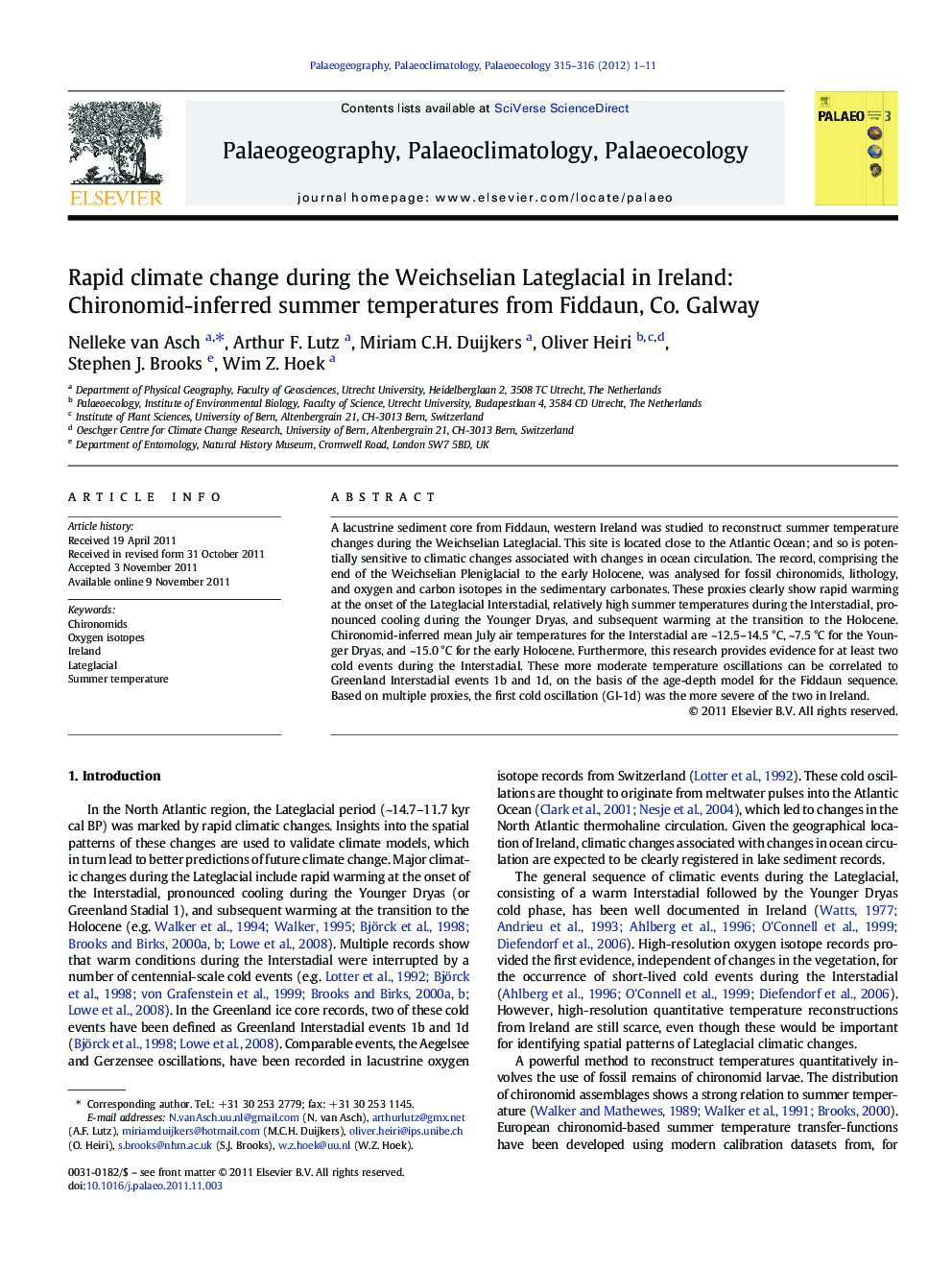| Article ID | Journal | Published Year | Pages | File Type |
|---|---|---|---|---|
| 4467043 | Palaeogeography, Palaeoclimatology, Palaeoecology | 2012 | 11 Pages |
A lacustrine sediment core from Fiddaun, western Ireland was studied to reconstruct summer temperature changes during the Weichselian Lateglacial. This site is located close to the Atlantic Ocean; and so is potentially sensitive to climatic changes associated with changes in ocean circulation. The record, comprising the end of the Weichselian Pleniglacial to the early Holocene, was analysed for fossil chironomids, lithology, and oxygen and carbon isotopes in the sedimentary carbonates. These proxies clearly show rapid warming at the onset of the Lateglacial Interstadial, relatively high summer temperatures during the Interstadial, pronounced cooling during the Younger Dryas, and subsequent warming at the transition to the Holocene. Chironomid-inferred mean July air temperatures for the Interstadial are ~12.5–14.5 °C, ~7.5 °C for the Younger Dryas, and ~15.0 °C for the early Holocene. Furthermore, this research provides evidence for at least two cold events during the Interstadial. These more moderate temperature oscillations can be correlated to Greenland Interstadial events 1b and 1d, on the basis of the age-depth model for the Fiddaun sequence. Based on multiple proxies, the first cold oscillation (GI-1d) was the more severe of the two in Ireland.
► We reconstructed Lateglacial climatic changes in western Ireland. ► Proxies include fossil chironomids, lithology and oxygen isotopes. ► Chironomid-inferred July temperatures decreased 6–7 °C during the Younger Dryas. ► At least two distinct cold events occurred during the Interstadial.
